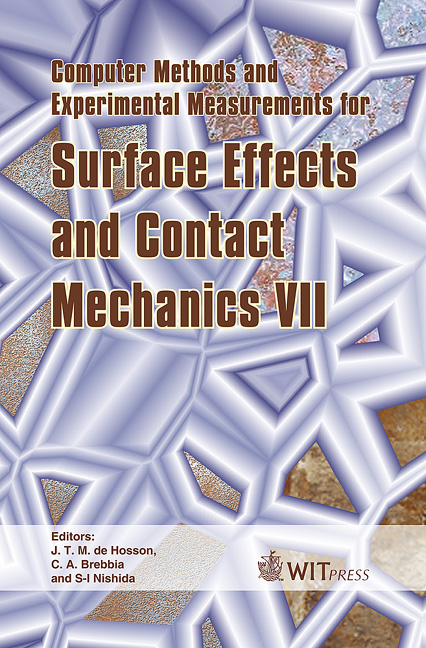Crack Propagation In Compressive Residual Stress Fields Of Crankshafts: Experimental Study And Numerical Simulation
Price
Free (open access)
Transaction
Volume
49
Pages
10
Published
2005
Size
793 kb
Paper DOI
10.2495/SECM050231
Copyright
WIT Press
Author(s)
C. Gardin, S. Courtin, G. Bézine, D. Bertheau & H. Ben Hadj Hamouda
Abstract
This study deals with the influence of roller burnishing on fatigue crack propagation in the fillet of a crankshaft. Destructive tests have enabled us to obtain crack kinetics and shapes in a specimen close to the geometry of the crankshaft. The beneficial effect of roller burnishing has been confirmed on both crack initiation and propagation. Some cracks have even been stopped. These mechanisms are likely to be linked to the compressive residual stresses induced, and observed crack closure. At the same time, a numerical predictive method of the crack propagation in roller-burnished specimens has also been implemented and gives good results. It is based on a step-by-step process of stress intensity factor calculations by elastic finite element analyses on models with an initial roller burnishing stress field. A numerical modification concerning experimental crack closure has to be considered. The proposed method and the developed experimental discussion seem to possibly be extended to the case of the crankshaft. Keywords: crack propagation, fatigue, roller burnishing, fracture mechanics, stress concentrators, crankshaft. 1 Introduction Roller burnishing is a very commonly used industrial process. It involves a local plastic deformation on surface that permits the fatigue strength of structures to be increased. Crack propagation is indeed delayed by the introduction of
Keywords
crack propagation, fatigue, roller burnishing, fracture mechanics, stress concentrators, crankshaft.





